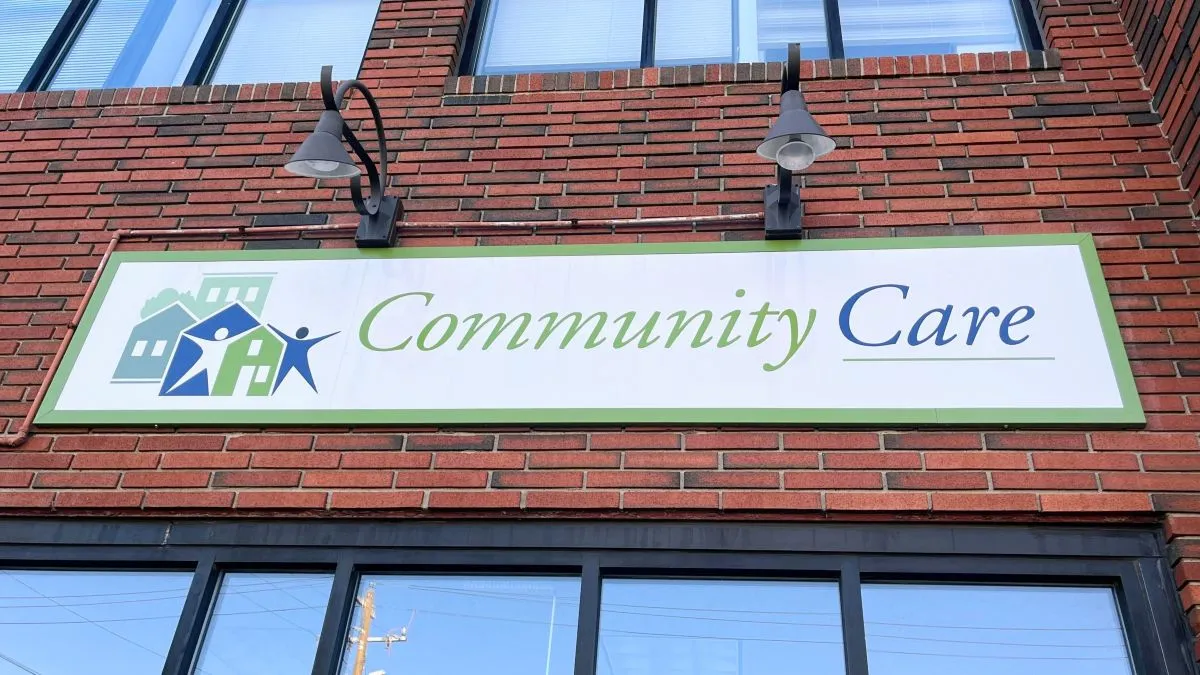Maine hired contractor to organize timely visits for families in child welfare cases. It delivered 10% of the time. – The Maine Monitor

Report on Maine’s Supervised Visitation Services and Alignment with Sustainable Development Goals
Introduction: Institutional Failures and a Commitment to Global Goals
An analysis of Maine’s child welfare system reveals significant challenges in providing timely, supervised visitation for children removed from their homes. These operational failures directly contravene state mandates and undermine progress toward key United Nations Sustainable Development Goals (SDGs), particularly SDG 16 (Peace, Justice and Strong Institutions), SDG 3 (Good Health and Well-being), and SDG 10 (Reduced Inequalities). The state requires parent-child visits to be arranged within seven days of a child’s removal, a critical period for maintaining familial bonds and mitigating trauma. However, performance data from 2024 indicates a systemic breakdown in meeting this requirement, raising concerns about institutional accountability and the well-being of vulnerable populations.
Performance Analysis of Contracted Providers: A Challenge to SDG 16 (Peace, Justice and Strong Institutions)
SDG 16 emphasizes the need for effective, accountable, and transparent institutions. The performance of Maine’s primary contracted visitation provider, Community Care, demonstrates a significant gap in achieving this goal. The state contract mandates that 90% of visitations be scheduled within the seven-day timeframe, yet performance has fallen drastically short.
Comparative Provider Performance (2024)
- Community Care: Scheduled only 10% of 276 referrals within the seven-day mandate. The median wait time was 29 days.
- AMHC: Scheduled 48% of 150 referrals within seven days.
- Penquis Community Action Agency: Scheduled 93% of 212 referrals within seven days, exceeding the contractual benchmark.
- Fair Shake (Monitored Visits): Scheduled 95% of referrals within seven days between April and December 2024.
Institutional Accountability and Governance
The state’s response to this underperformance raises further concerns regarding institutional accountability under SDG 16. Key issues include:
- Contract Renewal: Despite Community Care’s 10% compliance rate, the Department of Health and Human Services (DHHS) signed a new, more lucrative contract with the organization in December, authorizing payments up to $3.5 million annually.
- Lack of Oversight: DHHS did not confirm what steps, if any, were taken to improve Community Care’s performance or claw back taxpayer funds. The department noted that providers are “paid only for services delivered.”
- Data Gaps: DHHS does not appear to track aggregate data on its own success in meeting the seven-day requirement when caseworkers must intervene, with such information being “documented within individual case files.”
This lack of accountability, as highlighted by legal professionals and state watchdogs, weakens the justice system’s ability to protect the rights of children and parents.
Impact on Human Well-being and Social Equity (SDG 3 & SDG 10)
The failure to provide timely visitations has profound consequences for the health, well-being, and equitable treatment of families involved in the child welfare system, directly impacting SDG 3 and SDG 10.
Consequences for Vulnerable Families
- Mental and Emotional Health (SDG 3): Delays in visitation exacerbate the trauma experienced by both children removed from their homes and parents facing separation. Experts and court-appointed guardians described the impact of preventing infants and children from seeing their parents as “horrific,” undermining the parent-child bond essential for healthy development.
- Delayed Reunification: State watchdogs, including the Office of Program Evaluation and Government Accountability, have identified inadequate visitation as a factor that potentially lengthens the time to family reunification.
- Reduced Inequalities (SDG 10): The breakdown in services disproportionately affects vulnerable families, creating barriers to justice and family preservation. A District Court Judge noted it was “simply not acceptable” for a mother and child to have only one visit in three months, highlighting a systemic failure to provide adequate resources.
Strain on Public Service Institutions
The burden of contractor failure is shifted to state caseworkers, impacting the state’s capacity to provide effective services. The caseworkers’ union reported that staff face an “impossible workload” by having to arrange and supervise visits when contractors fail to do so. This practice takes caseworkers away from other critical duties and points to systemic weaknesses that hinder the state’s ability to serve its most vulnerable citizens effectively.
Conclusion and Future Outlook
The disparity in provider performance, with Penquis exceeding its contractual obligations, indicates that operational challenges are not insurmountable. The state’s contracts with its three supervised visitation providers expired on September 30, and a new request for proposals is anticipated for early 2026. This presents a critical opportunity for the State of Maine to redesign its procurement and oversight processes to align with the principles of the Sustainable Development Goals. Future contracts must prioritize accountability, transparency, and performance to ensure the state builds strong institutions (SDG 16) that protect the health and well-being (SDG 3) of all families and reduce systemic inequalities (SDG 10).
Analysis of Sustainable Development Goals in the Article
1. Which SDGs are addressed or connected to the issues highlighted in the article?
The article highlights issues directly connected to several Sustainable Development Goals (SDGs). The core themes of child welfare, institutional accountability, and the well-being of vulnerable families are central to the global development agenda.
- SDG 16: Peace, Justice and Strong Institutions: This is the most prominent SDG addressed. The article focuses on the failure of a state-contracted institution (Community Care) and the overseeing state department (DHHS) to effectively and accountably deliver a legally mandated service. It deals with access to justice for vulnerable families, the transparency of government operations, and the effectiveness of institutions responsible for child protection.
- SDG 3: Good Health and Well-being: The article explicitly mentions the “trauma” experienced by children removed from their homes and the importance of visits for the mental and emotional well-being of both parents and children. The failure to provide timely visits directly undermines the health and well-being of these individuals.
- SDG 10: Reduced Inequalities: The issues discussed disproportionately affect a vulnerable group—families involved in the child welfare system. Furthermore, the article reveals significant inequalities in service provision based on geographic location within Maine, with families in areas served by Community Care receiving a far lower standard of service than those in areas served by other providers like Penquis.
2. What specific targets under those SDGs can be identified based on the article’s content?
Based on the article’s content, several specific SDG targets can be identified as directly relevant to the failures in Maine’s child visitation system.
-
Under SDG 16 (Peace, Justice and Strong Institutions):
- Target 16.2: End abuse, exploitation, trafficking and all forms of violence against and torture of children. The entire context is the state’s child protection system, which exists to address child abuse and neglect. The failure to provide timely visitation, a critical component for family reunification and mitigating trauma, represents a systemic failure within the framework designed to protect children and their well-being after state intervention.
- Target 16.6: Develop effective, accountable and transparent institutions at all levels. This target is central to the article. The analysis of Community Care’s performance data (scheduling visits on time in only 10% of cases) demonstrates a lack of effectiveness. The state’s renewal of the contract despite this poor performance and the lack of action to “claw back taxpayer money or find another provider” points to a failure in accountability. The fact that the data was obtained through a public records request highlights the theme of institutional transparency.
-
Under SDG 3 (Good Health and Well-being):
- Target 3.4: Promote mental health and well-being. The article emphasizes that visits are crucial for children who have “undergone the trauma of being removed from their home” and for “maintaining a bond between parent and child.” An attorney is quoted describing the separation of babies from their parents without contact as “horrific.” The systemic delays in visitation directly harm the mental and emotional well-being of vulnerable children and parents.
-
Under SDG 10 (Reduced Inequalities):
- Target 10.3: Ensure equal opportunity and reduce inequalities of outcome. The article presents a stark contrast in service delivery. Penquis, a provider in two counties, met its target by scheduling 93% of visits within seven days. In contrast, Community Care, serving five districts, only achieved this 10% of the time, with one district as low as 3.6%. This demonstrates a significant inequality of outcome for children and families based purely on their geographic location within the state.
3. Are there any indicators mentioned or implied in the article that can be used to measure progress towards the identified targets?
Yes, the article provides several explicit quantitative and qualitative indicators that can be used to measure performance and progress towards the identified targets.
-
Indicators for SDG 16 (Targets 16.2 and 16.6):
- Percentage of supervised visits scheduled within the legally required timeframe (7 days): This is the primary performance metric discussed. The article provides precise figures: Community Care (10%), AMHC (48%), and Penquis (93%). This directly measures the effectiveness and responsiveness of the institution.
- Median wait time for a visit: The article quantifies the delay, stating the median wait time for a visit scheduled by Community Care was 29 days, compared to seven days for AMHC and five days for Penquis. This indicator measures the timeliness of service delivery.
- Compliance with contract terms: The state contract mandated that 90% of referrals be scheduled within seven days. The article shows that Community Care fell far short of this benchmark, indicating a failure in accountability and contract enforcement.
-
Indicators for SDG 3 (Target 3.4):
- Rate of family reunification: The article implies this as an indicator by quoting a state watchdog report that inadequate visitation was “potentially lengthening the time to reunification.” While no specific data is given, tracking reunification rates would be a key measure of the system’s success in promoting family well-being.
- Qualitative assessments of trauma and family bonding: The article relies on expert testimony from lawyers, caseworkers, and ombudsmen who describe the “trauma” of removal and the importance of visits for family bonds. These qualitative statements serve as indicators of the system’s impact on mental health.
-
Indicators for SDG 10 (Target 10.3):
- Disparity in service delivery across geographic regions: The stark difference in the percentage of timely visits between providers (e.g., 93% for Penquis vs. 10% for Community Care) is a direct indicator of geographic inequality in access to and quality of essential services.
4. Table of SDGs, Targets, and Indicators
| SDGs | Targets | Indicators Identified in the Article |
|---|---|---|
| SDG 16: Peace, Justice and Strong Institutions |
|
|
| SDG 3: Good Health and Well-being |
|
|
| SDG 10: Reduced Inequalities |
|
|
Source: themainemonitor.org
What is Your Reaction?
 Like
0
Like
0
 Dislike
0
Dislike
0
 Love
0
Love
0
 Funny
0
Funny
0
 Angry
0
Angry
0
 Sad
0
Sad
0
 Wow
0
Wow
0















































/environment-climate-change-and-health-(ech)/water-sanitation-hygiene-and-health-(wsh)/landfill-tuvalu-36092.tmb-1200v.jpg?sfvrsn=5c21fe40_1#)


.jpg.webp?itok=0ZsAnae9#)


























